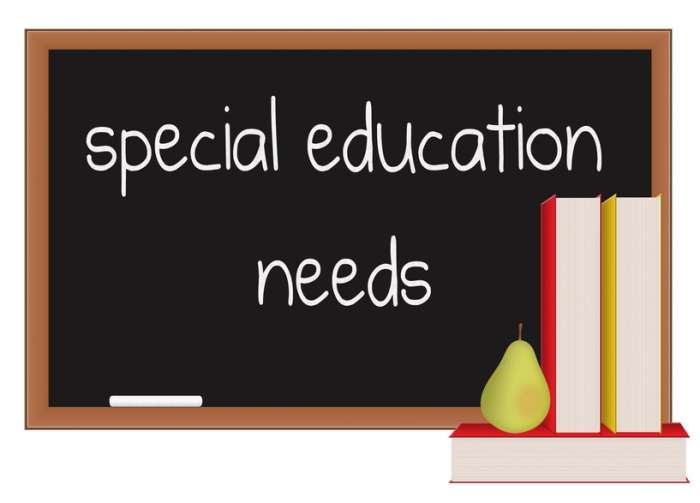Despite commitments by Member States to promote inclusive education, children with special educational needs and disabled adults are still getting a raw deal, according to a report published today by the European Commission. Many are placed in segregated institutions and those in mainstream educational settings often receive inadequate support, it says.
The report calls on Member States to work harder to develop inclusive education systems and to remove the barriers faced by vulnerable groups when it comes to participation and success in education, training and employment.
“We have to strengthen our efforts to provide adequately financed inclusive education policies if we want to improve the lives of children with special educational needs and disabled adults.
It is time to deliver on the commitments which have been made. Inclusive education is not an optional extra; it is a basic necessity. We must put the most vulnerable at the heart of our actions to achieve a better life for all,” said Androulla Vassiliou, European Commissioner for Education, Culture, Multilingualism and Youth.
Around 45 million EU citizens of working age have a disability and 15 million children have special educational needs. The report shows that in some cases, they are deprived of educational and employment opportunities altogether.
Children with special educational needs frequently leave school with few or no qualifications, before moving into specialist training which can, in some cases, impair rather than increase their job prospects.
People with disabilities or special educational needs are much more likely to be unemployed or economically inactive, and even those who are relatively successful in the job market often earn less than their non-disabled counterparts, the report states.
In all Member States, deprived children (especially boys) from Roma, ethnic minority and socio-economically disadvantaged backgrounds are overrepresented in special needs schools.
The report questions whether special education systems increase the isolation of pupils who are already socially marginalised, reducing rather than enhancing their opportunities in life.
Research suggests that such children could be enrolled in mainstream schools if there was more investment in the development of their language skills and more sensitivity to cultural differences.
The report also highlights a wide variation between Member States as to how children with special needs are identified, as well as whether they are placed in mainstream or special schools. For example, in Flanders (Belgium) 5.2% of pupils with special needs are in segregated special schools, while in Italy it is only 0.01%.
The report suggests that more needs to be done to harmonise definitions and improve data gathering to enable countries to compare their approaches more effectively and learn from each other’s experience.
Background
The report, “Education and Disability/Special Needs – policies and practices in education, training and employment for students with disabilities and special educational needs in the EU”, was compiled for the European Commission by the independent network of experts in social sciences of education and training (NESSE).
Other key findings from the report
• While learners with profound impairments may be difficult to include in mainstream learning environments or may be better served in separate settings, there is growing evidence that a very large number of learners with disabilities/special educational needs can be integrated into mainstream education and that quality inclusive education is good education for all learners;
• While it is of vital importance to move towards more inclusive education systems, teacher education and continuing professional development have not always been organised along inclusive lines;
• In addition to teachers, learning support teachers and classroom assistants play a vital role in making inclusion work well in practice;
• In some European countries curricula are standardised and inflexible, which makes the inclusion of disabled children difficult. Grade retention practices also undermine the principles of inclusion;
• Disabled people are less likely to progress into higher education than non-disabled people;
• Disabled people who obtain higher education qualifications still experience disadvantages in the labour market, but they are much more likely to be employed than less qualified disabled people;
• There are no cross-European comparative data on the number of disabled students in higher education, or on the impairments and results of those who are in higher education;
• There is a lack of up-to-date and reliable data on number of disabled people in employment in different EU countries;
• Disability benefits ameliorate the risk of poverty and social exclusion, but are likely to be reduced due to the current public spending squeeze across Europe;
• ‘Flexicurity’ arrangements are helpful in allowing disabled people to work part-time without the entire loss of benefits;
• There is considerable convergence on disability and employment policy across Europe, with most countries adopting similar employment support measures. However, employment support and vocational rehabilitation programmes vary with regard to their effectiveness in bringing disabled people into the labour market, or helping them to retain employment if they become disabled whilst working.
| Number of pupils in compulsory education and percentage in segregated special schools and special classes |
| Country | Number of pupils in compulsory education | Number of pupils with special educational needs and as % of total pupil population | Number of pupils in segregated special schools and as % of total pupil population | Number of pupils in segregated special classes and as % of total pupil population |
| Austria | 802,519 | 28,525 (3.5%) | 11,787 (1.5%) | 965 (0.1%) |
| Belgium (Fl.) | 871,920 | 54,336 (6.2%) | 46,091 (5.2%) | 0 |
| Belgium (Fr.) | 687,137 | 30,993 (4.5%) | 30,773 (4.4%) | 0 |
| Bulgaria | 693,270 | 14,083 (2.0%) | 8,119 (1.1%) | 391 (0.05%) |
| Cyprus | 97,938 | 5,445 (5.5%) | 293 (0.3%) | 583 (0.6%) |
| Czech Republic | 836,372 | 71,879 (8.6%) | 30,092 (3.6%) | 7,026 (0.8%) |
| Denmark | 719,144 | 33,733 (4.6%) | 12,757 (1.8%) | 18,986 (2.6%) |
| Estonia | 112,738 | 10,435 (9.2%) | 3,782 (3.0%) | 1,459 (1.3%) |
| Finland | 559,379 | 45,493 (8.1%) | 6,782 (1.2%) | 14,574 (2.6%) |
| France | 12,542,100 | 356,803 (2.8%) | 75,504 (0.6%) | 161,351 (1.3%) |
| Germany | 8,236,221 | 479,741 (5.8%) | 399,229 (4.8%) | 0 |
| Greece | 1,146,298 | 29,954 (2.6%) | 7,483 (0.6%) | 22,471 (2.0%) |
| Hungary | 1,275,365 | 70,747 (5.5%) | 33,014 (2.6%) | 0 |
| Iceland | 43,511 | 10,650 (24.0%) | 143 (0.3%) | 348 (0.8%) |
| Ireland | 649,166 | 33,908 (5.2%) | 4,976 (0.8%) | 2,380 (0.4%) |
| Italy | 7,326,567 | 170,696 (2.3%) | 693 (0.01%) | 0 |
| Latvia | 185,032 | 9,057 (4.8%) | 6,363 (3.4%) | 1,175 (0.6%) |
| Lithuania | 440,504 | 51,881 (11.7%) | 4,253 (1.0%) | 855 (0.2%) |
| Luxembourg | 64,337 | 1,374 (2.2%) | 663 (1.0%) | 0 |
| Malta | 48,594 | 2,645 (5.4%) | 137 (0.3%) | 13 (0.03%) |
| Netherlands | 2,411,194 | 103,821 (4.3%) | 64,425 (2.7%) | 0 |
| Norway | 615,883 | 48,802 (8.0%) | 1,929 (0.3%) | 5,321 (0.9%) |
| Poland | 4,511,123 | 127,954 (2.8%) | 59,880 (1.3%) | 0 |
| Portugal | 1,331,050 | 35,894 (2.7%) | 2,660 (0.2%) | 2,115 (0.2%) |
| Slovenia | 162,902 | 10,504 (2.7%) | 2,829 (1.7%) | 400 (0.24%) |
| Spain | 4,437,258 | 104,343 (2.35%) | 17,400 (0.4%) | 0 |
| Sweden | 906,189 | 13,777 (1.5%) | 516 (0.06%) | 13,261 (1.5%) |
| Switzerland | 777,394 | 41,645 (5.4%) | 16,223 (2.1%) | 25,422 (3.3%) |
| UK (England) | 8,033,690 | 225,920* (2.8%) | 96,130 (1.2%) | 16,190 (0.2%) |
| UK(Scotland) | 647,923 | 45,357 (7.0%) | 6,659 (1.0%) | 1,481 (0.2%) |
| UK (Wales) | 377,503 | 12,895 (3.4%) | 3,070 (0.8%) | 2,843 (0.7%) |
* Data for England includes pupils with Statements of Need only
Source: European Agency for Development in Special Needs Education



